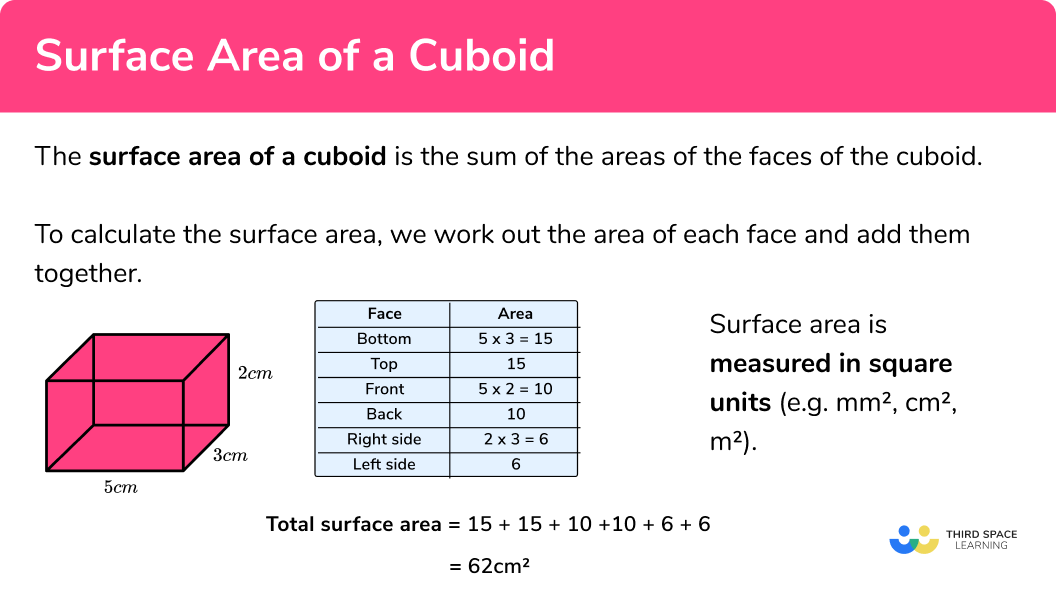Imagine a rectangular container used for storing various items. How do you determine its storage capacity? Understanding the volume of the container is crucial. In the realm of mathematics, the concept of volume plays a significant role, especially when it comes to three-dimensional objects like cuboids.

Image: www.youtube.com
This article will embark on an in-depth journey to explore the volume of cuboids, equipping you with the knowledge and techniques to calculate these volumes effortlessly!
What is a Cuboid and its Significance?
A cuboid, also known as a rectangular prism, is a three-dimensional object characterized by six rectangular faces. These faces meet at right angles, forming a consistent rectangular shape. Cuboids are commonly found in our daily lives, from the boxes we use to store belongings to the buildings we inhabit.
Understanding the volume of a cuboid is essential for various reasons. It helps architects determine the interior space of buildings, enables engineers to design storage containers with optimal capacity, and assists manufacturers in calculating the amount of material required for packaging.
The Formula for Calculating Volume
The formula for calculating the volume of a cuboid is as simple and elegant as it is effective:
Volume = Length × Width × Height
Where:
- Length is the distance between the two longest parallel sides of the cuboid.
- Width is the distance between the other two parallel sides.
- Height is the distance between the top and bottom faces.
By plugging in the specific values for length, width, and height, you can easily determine the volume of any cuboid.

Image: thirdspacelearning.com
Step-by-Step Calculation Guide
Let’s delve deeper into the steps involved in calculating the volume of a cuboid:
- Measure the Dimensions: Using a ruler or measuring tape, obtain the length, width, and height of the cuboid.
- Note the Units: Ensure that the dimensions are measured in the same unit system (e.g., centimeters or inches).
- Substitute the Values: Plug the measured values into the volume formula mentioned earlier.
- Multiply the Values: Multiply the length, width, and height together to obtain the volume.
- Add the Units: Include the appropriate units in your answer to ensure correct interpretation.
Following these steps will allow you to calculate the volume of any cuboid with precision and ease.
Tips and Expert Advice
To enhance your understanding further, consider these tips and expert advice:
- Understand the concept: Grasping the concept of volume as space enclosed by surfaces is fundamental.
- Visualize the cuboid: Creating a mental or physical model of the cuboid helps in visualizing the dimensions.
- Use standard units: Ensure consistent use of units throughout the calculation for accurate results.
- Cross-check your work: Recalculating the volume using different combinations of dimensions can enhance accuracy.
By implementing these tips, you can become proficient in calculating cuboid volumes.
FAQs on Cuboid Volume
To clarify any lingering questions, here are some commonly asked questions about cuboid volume:
By understanding these FAQs, you can broaden your comprehension of cuboid volume.
How To Calculate Volume Of A Cuboid
https://youtube.com/watch?v=OMOtvy7VCgg
Conclusion
The calculation of the volume of a cuboid is a fundamental mathematical concept with significant practical applications. By understanding the formula, following the step-by-step guide, implementing tips and expert advice, and addressing common FAQs, you have acquired the knowledge and skills to master this calculation. Whether you are a student, professional, or simply curious about three-dimensional shapes, we encourage you to delve deeper into the world of cuboid volume.
Are you interested in further exploring the intricacies of cuboids and their applications in various fields? If so, continue exploring our website for more informative articles and resources related to this fascinating topic.
